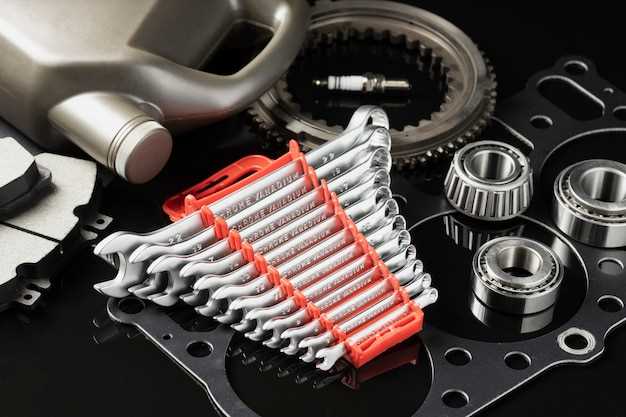
Replacing spark plugs in your Toyota is a vital maintenance task that can greatly influence the performance and efficiency of your vehicle. Spark plugs play a crucial role in the combustion process, igniting the fuel-air mixture within the engine’s cylinders. Regularly checking and replacing these components ensures optimal engine function, improved fuel economy, and reduced emissions.
Over time, spark plugs can become worn or fouled due to carbon buildup, engine oil leaks, or other factors. This degradation can lead not only to a decrease in engine performance but also cause issues such as rough idling or difficulty starting the vehicle. In this guide, we will walk you through the steps necessary to replace spark plugs in various Toyota models, providing detailed instructions and tips to make the process as smooth as possible.
Whether you are a seasoned mechanic or a novice looking to tackle your first DIY project, understanding how to replace spark plugs is essential for maintaining your Toyota’s health. With the right tools and a little bit of know-how, you can keep your engine running efficiently and extend its lifespan.
Choosing the Right Spark Plugs for Your Toyota Model

When it comes to maintaining the performance of your Toyota, selecting the appropriate spark plugs is crucial. Spark plugs play a vital role in the ignition process, igniting the air-fuel mixture inside the engine’s cylinders. Choosing the right plugs ensures efficient combustion, better fuel economy, and smoother operation.
1. Check the Owner’s Manual: The first step in selecting spark plugs is to consult your owner’s manual. It contains specific recommendations regarding the type and heat range of plugs suitable for your Toyota model. Following these guidelines helps avoid compatibility issues.
2. Understand Spark Plug Types: There are various types of spark plugs available, including copper, platinum, and iridium. Copper plugs are typically less expensive but have a shorter lifespan. Platinum and iridium options offer better durability and performance, making them suitable for modern Toyota engines.
3. Consider Heat Range: The heat range of spark plugs is essential for optimal engine performance. A plug that is too hot may cause pre-ignition, while one that is too cold could lead to fouling. Your Toyota’s specifications will guide you in selecting the appropriate heat range based on your driving conditions.
4. Look for OEM or Quality Replacement Options: Original Equipment Manufacturer (OEM) spark plugs are designed specifically for your vehicle and ensure a perfect fit. If you opt for aftermarket plugs, ensure they meet or exceed OEM standards for quality and performance.
5. Maintenance Frequency: Replacing spark plugs according to the recommended maintenance schedule is critical. For many Toyota models, spark plugs should be changed every 30,000 to 100,000 miles, depending on the type used. Regular checks can prevent engine misfires and enhance overall performance.
By carefully considering these factors, you can choose the right spark plugs for your Toyota model, ensuring reliable ignition and engine efficiency.
Step-by-Step Process for Removing Old Spark Plugs
Removing old spark plugs is a crucial step in maintaining the performance of your Toyota vehicle. Follow these detailed instructions to carry out this DIY task effectively.
-
Gather Necessary Tools:
- Spark plug socket
- Ratchet wrench
- Extension bar (if needed)
- Torque wrench
- Anti-seize lubricant
- Dielectric grease
-
Prepare the Vehicle:
- Park the car on a flat surface and turn off the engine.
- Disconnect the negative battery terminal to avoid any electrical issues.
- Allow the engine to cool completely.
-
Locate the Spark Plugs:
- Refer to your vehicle’s manual to find the exact location of the spark plugs.
- Remove any engine covers if necessary to gain access to the plugs.
-
Remove the Ignition Coils:
- Disconnect the electrical connectors from each ignition coil.
- Unbolt the ignition coils using the proper socket and set them aside carefully.
-
Extract the Spark Plugs:
- Using the spark plug socket and ratchet, carefully loosen and remove each spark plug.
- Turn counterclockwise until the plug is free, then lift it out of the cylinder head.
-
Inspect the Old Plugs:
- Examine the condition of the old plugs for signs of wear or damage.
- Check for excessive carbon buildup or wear patterns that can indicate engine issues.
After completing these steps, proceed with installing the new spark plugs following the manufacturer’s specifications. This DIY approach not only saves money but also enhances your understanding of your Toyota vehicle’s engine. Always refer to your vehicle’s service manual for specific details related to your model.
Installing New Spark Plugs and Ensuring Proper Torque

Installing new spark plugs in your Toyota vehicle is a crucial step in maintaining optimal engine performance. Start by cleaning the ignition area to prevent debris from entering the engine. Ensure that the new plugs are the correct type for your specific model, as variations exist across different Toyota engines.
Before installation, check the gap between the electrodes of the spark plugs. This gap affects ignition efficiency and should match the specifications provided by the manufacturer. Use a feeler gauge or a spark plug gap tool to measure and adjust the gap as necessary.
When placing the new spark plugs into the engine, do so carefully to avoid cross-threading. Hand-tighten each plug first to ensure it is properly aligned without forcing it in. After hand-tightening, use a torque wrench to secure the plugs to the manufacturer’s specified torque rating. Over-tightening can lead to damage, while under-tightening may cause the plugs to loosen over time.
Finally, remember to reconnect the ignition wires securely. After installation, start the engine and listen for any irregularities. Proper installation and torque of spark plugs will lead to improved fuel efficiency, better engine performance, and reduced emissions.




